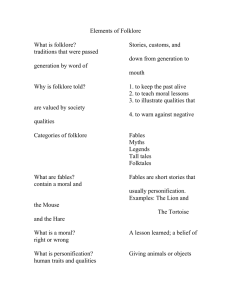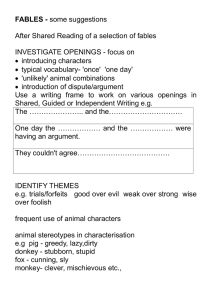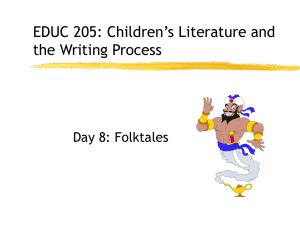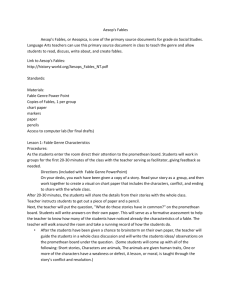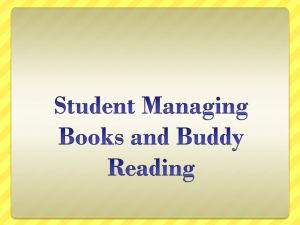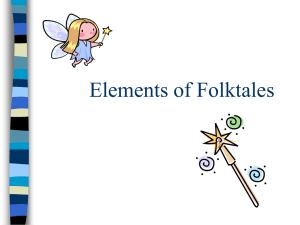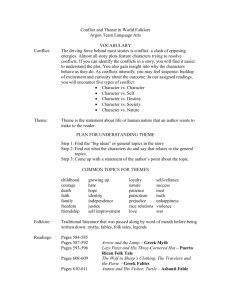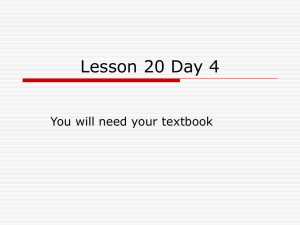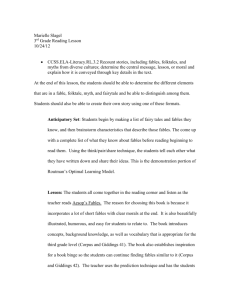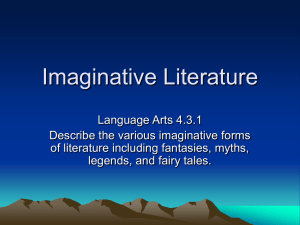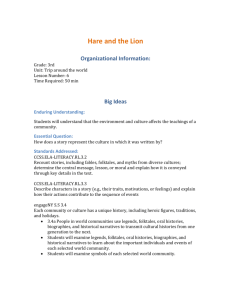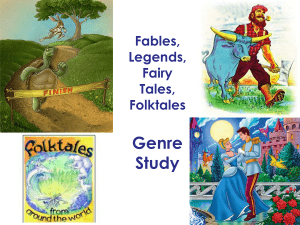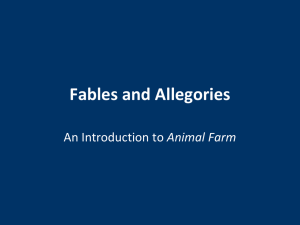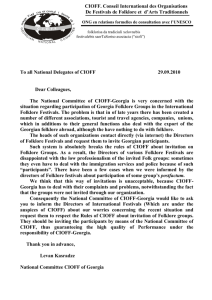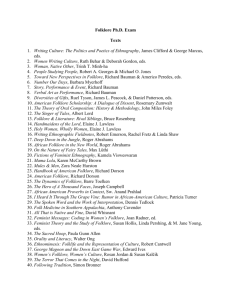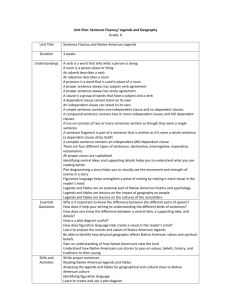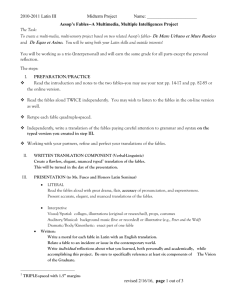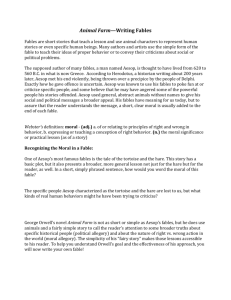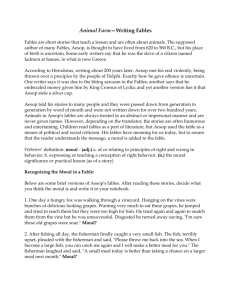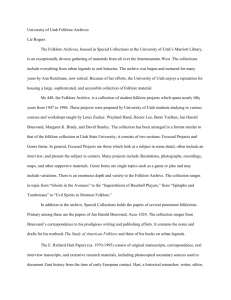What is Folklore?
advertisement
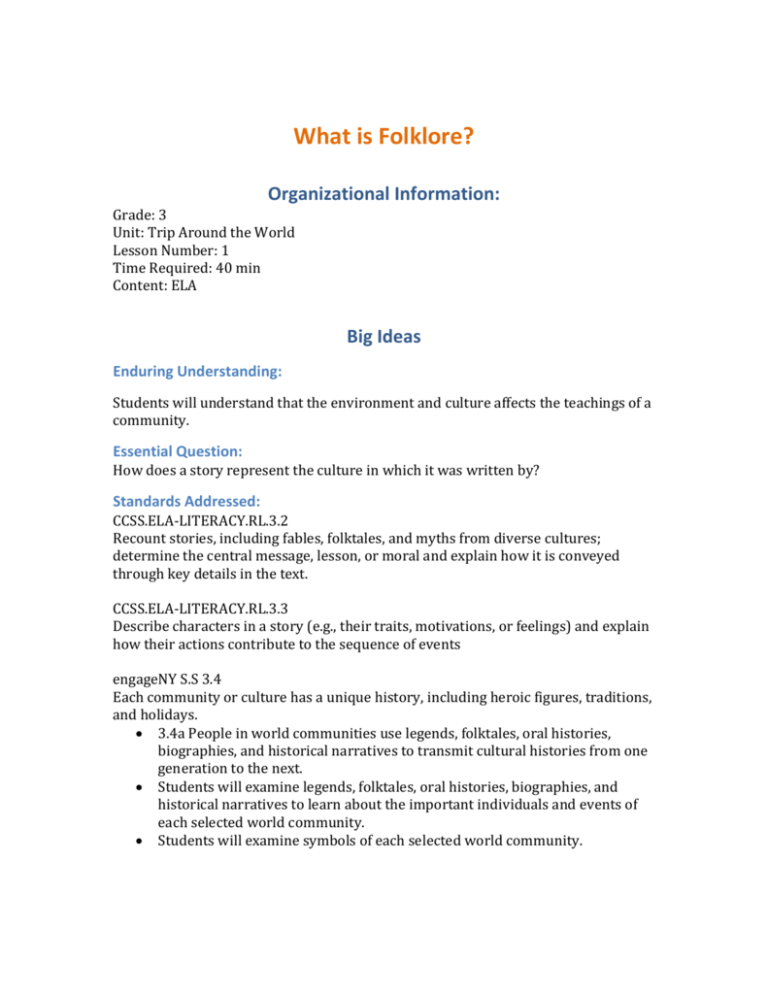
What is Folklore? Organizational Information: Grade: 3 Unit: Trip Around the World Lesson Number: 1 Time Required: 40 min Content: ELA Big Ideas Enduring Understanding: Students will understand that the environment and culture affects the teachings of a community. Essential Question: How does a story represent the culture in which it was written by? Standards Addressed: CCSS.ELA-LITERACY.RL.3.2 Recount stories, including fables, folktales, and myths from diverse cultures; determine the central message, lesson, or moral and explain how it is conveyed through key details in the text. CCSS.ELA-LITERACY.RL.3.3 Describe characters in a story (e.g., their traits, motivations, or feelings) and explain how their actions contribute to the sequence of events engageNY S.S 3.4 Each community or culture has a unique history, including heroic figures, traditions, and holidays. 3.4a People in world communities use legends, folktales, oral histories, biographies, and historical narratives to transmit cultural histories from one generation to the next. Students will examine legends, folktales, oral histories, biographies, and historical narratives to learn about the important individuals and events of each selected world community. Students will examine symbols of each selected world community. Objectives and Assessments: Objective 1: Students will be able to define the overall category of folklore. Assessment 1: Students will have the definition written on folklore sheet. Objective 2: Students will analyze fables for meaning. Assessment 1: Students will correctly identify the meaning of each fable. Materials Students: Print out for definitions Aesop’s Fables #146 Teacher: Student’s supplies Prep: Preparation for the lesson: Have power point available and set up before lesson. Learning Activities Intro: Invite the class to listen and participate. Tell them you are going to read them a short story that has a secret message. They need to figure out the meaning. After hearing the story they can read it to themselves if they need more information. Step by Step Explanation of Activities: Activity 1: Read the story aloud. Have students give you their ideas and help sort out for moral of story. After reading have story on power point. Activity 2: Introduce this as a fable. Tell the students the definition of a fable. Discuss the definition. Introduce the idea of folklore and what the definition of Folklore is. Give students the definition sheets, and fill out the page for “Fables” Activity 3: Give each student 3 fables and have them identify the moral or lesson of the story. Closer: Introduce the next lesson. (Building a suite case)
